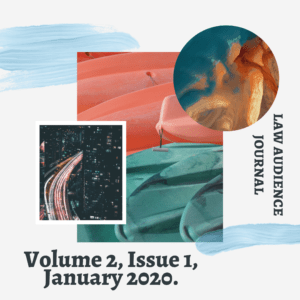AUTHORED BY: Ms. Rashi Shrivastava (B.A.LL.B), Symbiosis Law School, NOIDA.
I. INTRODUCTION:
The word “surrogate” is derived from a Latin word “subrogare” which means “to substitute or appointed to act in the place of someone especially in a specific role”, so surrogate mother basically refers to any woman who gives birth to a child on demand of the intending couple who is not able to have one and also the woman bears the child with the very intention of giving away the child to the intending couple once it is born. The contract made in writing between the intending couple and the woman who is bearing a child for them i.e., the surrogate mother is known as surrogacy agreement. To ensure each parties rights and security these agreements are necessary to be made.
There are two types of surrogacy agreements:
- Commercial surrogacy,
- Altruistic surrogacy.
Commercial surrogacy has a lot of different meanings. In this, the surrogate mother is compensated for her services whereas in altruistic surrogacy is an alternative to commercial surrogacy. Under this, the willing surrogate mother carries the child for the parents who are intended without any compensation. Commercial surrogacy is illegal in India, now after the Surrogacy Act 2016, it is legal in various countries of the world and is illegal in England, many of the U.S. States, and Australia, which acknowledge only one form of surrogacy i.e., altruistic surrogacy. In comparison, no surrogacy contracts or agreements are recognized by nations like Germany, Sweden and many other nations. India was a favourite fertility tourism destination before it became illegal.[1] Every year, so-called surrogacy organizations attracted families from overseas to India because the price of the entire Indian operation is as low as one-third of what it is in the United States and the United Kingdom.
The practice of surrogacy has been evolved thousand years ago and it has been practiced since then. The bible also cites an ancient instance of surrogacy. In 1986, the legal hurdles of surrogacy were first encountered in the landmark case known as ‘the Baby M case’. The concept of surrogacy is also found in India in many Hindu mythologies. In 1980, the first surrogacy agreement was made whereas, in 1985, the first successful gestational surrogate pregnancy was carried out by a woman in the USA.
With a Special Program of Assisted Reproduction (SPAR) in 1991 surrogacy took a step forward. Recently, in 2011 many of the records of surrogacy were broken when a mother of 61, the oldest-ever surrogate mother, carried her own grandchild. At this pace, we can only imagine what the future holds for surrogacy. Some bioethicists and feminists have welcomed trade surrogacy bans. They claim that building companies on the reproductive capacity of women are unethical.[2] Destinations like India became popular exactly because, by charging less for surrogate mothers, they provided surrogacy at bargain-basement rates. In order to accommodate the accessibility of customers to take time off from the job, they provided premature childbirth through cesarean surgeries.
To minimize the emotional expenses for customers, they established obstacles between surrogate mothers and customers. This permitted customers to leave India with their babies— no attached strings. Many bioethicists think that it is unsustainable to sell pregnancy as a service because it puts a cost on components and life of the human body. Commercial surrogacy, they note, results in females and kids being devalued and society being eventually degraded. It is therefore considered more ethical to remove money payment for surrogacy and instead endorse it as an altruistic, gift-like exchange between transactors.
II. DIMENSIONS THROUGH WHICH SURROGACY AGREEMENTS CAN BE LOOKED INTO:
There are various dimensions through which surrogacy agreements can be looked into. Some of them are as follows:
Whether surrogacy agreements amount to baby selling?
This is a crucial dimension which can be looked into. The different types of surrogacy agreements are: Commercial and altruistic surrogacy agreements. In commercial surrogacy, the surrogate mother is paid a lump sum amount of money for carrying the baby of the infertile couple which may look like baby-selling but it is actually not, the mother who is carrying the baby is in need of money so she is just doing an agreement in which there is reciprocal consideration. She will just give the service for which she is being paid like any other job. But the most important point is that the consent of the surrogate mother should be free and it should not be influenced by any family member. She should not be forced by anyone to carry a baby.[3]
In an altruistic surrogacy, the woman who is under surrogacy is not paid for her services rendered. Basically, in this type of agreements, there is the free will of the surrogate mother and so this clearly does not amount to baby selling. In India, an altruistic form of surrogacy is legal but the surrogate mother should be a close relative. India used to be a hub of surrogacy but after the Amendment Bill was passed in 2016, commercial surrogacy was banned in India and now the only altruistic form is allowed.[4]
A mandatory essential for surrogate mother is to be a close relative. Whether undue influence can be exercised in such a case?
On the first look, surrogacy looks like an attractive source as a poor surrogate mother can earn easy money. But the reality is different as many times the woman is forced by her husband or family members by using undue influence on her to become a surrogate mother so that they can earn a lump sum amount at one go. By this, the mental health of the woman is also harmed and also she has to undergo the whole cycle of pregnancy which becomes a major concern because from now she has to take care of herself and the baby then she is carrying. In some cases, they are not even paid because the baby who is born is dead or disabled since the contract which is usually made between the surrogate mother and intending parents is for a healthy baby.
According to the Surrogacy Amendment Bill, 2016, it is very important that the woman going under surrogacy should be a close relative of the intending couple. But the term “close relative” is not defined in the Bill and also the surrogate mother has to donate her own egg for the pregnancy which could lead to major health consequences for the baby, loss of baby’s genetic history, etc. After the 2016 Bill, a new regulation Bill for surrogacy agreements was passed in 2019. According to this Bill, surrogacy has become a practice by which the birth is given to a child by a woman for the intending couple and the intentions for the birth should be that the child will be hand over to the intending couple after the birth by the woman.
Whether an altruistic or a commercial form of surrogacy better in this economical world?
The type of surrogacy which is allowed in India is of altruistic form whereas in Russia commercial surrogacy is allowed. The payment given to surrogate mother in India is like all her medical expenses and insurance coverage whereas in Russia there is no limit. In India, it is required that the surrogate mother should be married but in Russia, there is no such issue even the single woman is allowed to become a surrogate mother. The age of the surrogate mother in India should be 25 to 35 year almost the same as Russia which is 20 to 35 years. In India, the woman can surrogate only once in her lifetime.[5] This is done to ensure the health of the woman who is going under surrogacy. But in Russia, there are no restrictions so this may lead to poor health of the woman who becoming many times became a surrogate mother.
According to the provisions of Surrogacy Regulation Bill, 2016, in India the surrogate mother should be a close relative of the intending parents as compared to Russia where there are no such provisions. In the Indian context, the legal guardians of the surrogate child are intending parents who are very different from Russia.
As in Russia, the legal guardians are: 1. the surrogate mother if she has provided the egg 2. Intending parents if surrogate mother has not provided the egg. There is one similarity between the two countries which is that the number of own children that a surrogate mother should have is at least one. By all these facts, we can make out that both the forms of surrogacy are good at different footings.
III. CONCLUSION:
Surrogacy is a fast-growing and ethically contentious practice, affecting a growing amount of nations and States around the globe. Using a female to gestate and deliver a baby to another pair, either altruistically or commercially, raises complicated legal and ethical issues related to parenting, the exploitation of women from socially and economically disadvantaged backgrounds, and child commodification. Surrogacy has brought into light a tangle of possible complex connection as this unique aspect surrogacy has led it to become the most controversial of all the other assisted reproductive techniques in recent years. Arguments of procreative liberty, privacy, and autonomy favour surrogacy agreements, but arguments against it as discussed are undue influence related to compensation, rights of the woman (the surrogate mother) and the resulting child. In our society, there is very limited acceptance for surrogacy and also there are sex-related issues which are prevalent. Also, the average failure rate is ninety percent this is also one of the problems which are faced in surrogacy. But the solutions to these issues are also evolving at a faster rate like high tech services, IVF method, development in clinical practice, etc.
The whole process of surrogacy deals with the mental and physical health of the surrogate mother; therefore, she should be provided with everything that she needs by the intending parents. Family support is also very necessary for the woman to become a surrogate mother. In-depth counselling is also needed in surrogacy agreements.
Regulating the implications of surrogate motherhood, particularly as regards parenting, would be acceptable in terms of human dignity and would validate the institutionalization of a true “reproductive proletariat.” It would ratify children’s purchase and poor women’s exploitation. By taking all positives and negatives into considerations, the fact that surrogacy gives hopes to couples who could not otherwise build a family outside of adoption cannot be negated. There is a need for middle legal grounds on which the intended couples, medical practitioners and regulatory bodies agree so as to provide this important treatment in a fair manner without and risks.
REFERENCES:
- www.ncbi.nlm.nih.gov.
- www.researchgate.net.
- www.medicalsciencejournal.com.
- https://www.prsindia.org/billtrack/surrogacy-regulation-bill-2019.
- https://www.prsindia.org/billtrack/surrogacy-regulation-bill-2016.
[1] RS Sharma, Social, ethical ,medical and legal aspects of surrogacy:an indian scenario, Indian journal of medival research, 13-16, (2014).
[2] P.Saxena,A mishra & s.Malik, Surrogacy:ethical and legal issue, indian journal of community medicine:official publication of indian association of preventive & social medicine,211-213, (2012).
[3] Das,S.S & Maut,priyanka, Commercialization of Surrogacy in india:A critical Analysis,14-29, JCC Law Review,2231, (2014).
[4] Dr j. srinivas Rao & Dr. Matin Ahmad Khan, Surrogacy in india:current perspectives, 3, international journal of medical and health research, 85-88, (2017).
[5] PK Chaturvedi, Garg &Mishra, Abha& Garg, Vidya Chaturvedi,Praveen, Surrogacy policy in india and need of acts to regulate commercial surrogacy, 3,journal of evolution of medical and dental sciences, 5384-5389, (2014).


